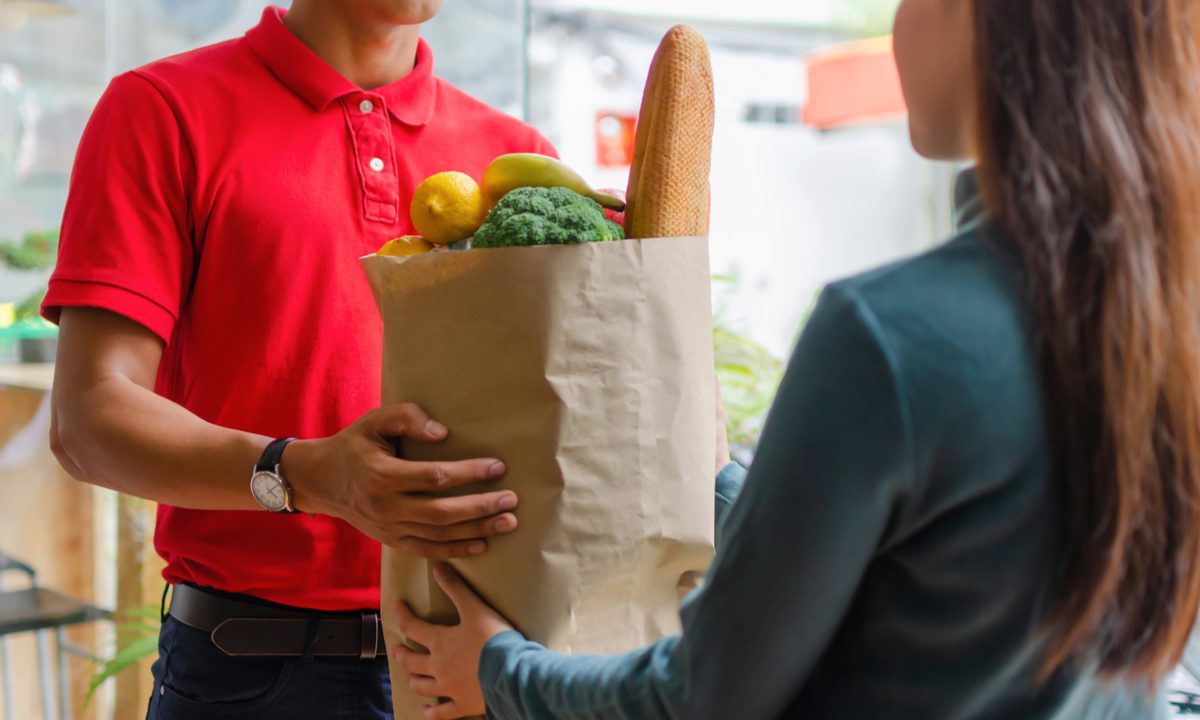Uber Joins Race to Extend Grocery Delivery to All Income Brackets

In the early months of the pandemic, many consumers made buying groceries online for delivery part of their routines. However, the high added fees associated with ordering delivery from brick-and-mortar brands and the high base rates of pure-play eGrocers meant that, while purchasing groceries on demand was a possibility for consumers with the money to do so, many could not access these options.
Now, as businesses push up against eGrocery adoption barriers, many are realizing that, if they want to grow their customer base, they will need to appeal to the needs of those who cannot throw money at the problem.
Uber, for its part, announced Thursday (May 19) that it is piloting on-demand and scheduled delivery with Grocery Outlet at 72 of the discount grocer’s locations across the West Coast. The pilot test is live in major cities, including Portland, Seattle and San Francisco, and Uber Eats is offering a free delivery promotion to incentivize consumers to try it out.
“Our goal is to provide a reliable and affordable grocery delivery option that works for everyone, no matter your budget,” said Uber Head of Grocery Oskar Hjertonsson in a statement. “We see our partnership with Grocery Outlet as an opportunity to do just that by delivering customers the brands they like at the Grocery Outlet prices they love, on-demand, right to their door.”
Read more: Uber to Test Scheduled Grocery Delivery on West Coast
Throughout 2022, eGrocery players have been making moves to grow their audience to include low-income shoppers. In April, Instacart announced the expansion of its own partnership with Grocery Outlet to include almost 400 stores across seven states.
See more: Grocery Delivery Evolves From Luxury Service to Mass-Market Option
“As consumers continue to seek value, selection and convenience, we’re proud to support Grocery Outlet as the retailer continues to build an engaging online experience for their customers,” Instacart Vice President of Retail Chris Rogers said in a statement at the time.
Additionally, since the start of the year, many grocers have been announcing that they now accept electronic benefits transfer (EBT) and Supplemental Nutrition Assistance Program (SNAP) payments for digital orders.
Research from PYMNTS’ 2021 How We Eat Playbook, which was created in collaboration with Carat from Fiserv, found that high-income consumers were 25% more likely than their low-income counterparts to order groceries online for delivery. Specifically, the report, based on a survey of 5,200 U.S. adults, found that 59% of those who earned less than $50,000 a year reported using these channels compared to about three-quarters of those who earned more than $100,000.
Read more: Restaurants and Grocers See Path to Picking up 200M New Customers
Additionally, cost is the single most common concern consumers cited as the top factor motivating their choice of grocery merchant, according to data from PYMNTS’ January study, “Decoding Customer Affinity: The Customer Loyalty to Merchants Survey 2022,” created in collaboration with Toshiba Global Commerce Solutions. The study, which drew from a survey of more than 2,000 U.S. consumers, found that 37% of shoppers cited price as the most influential factor when selecting a merchant to purchase groceries from, a greater share than said the same of any other factor.
Get the report: The Customer Loyalty to Merchants Survey 2022